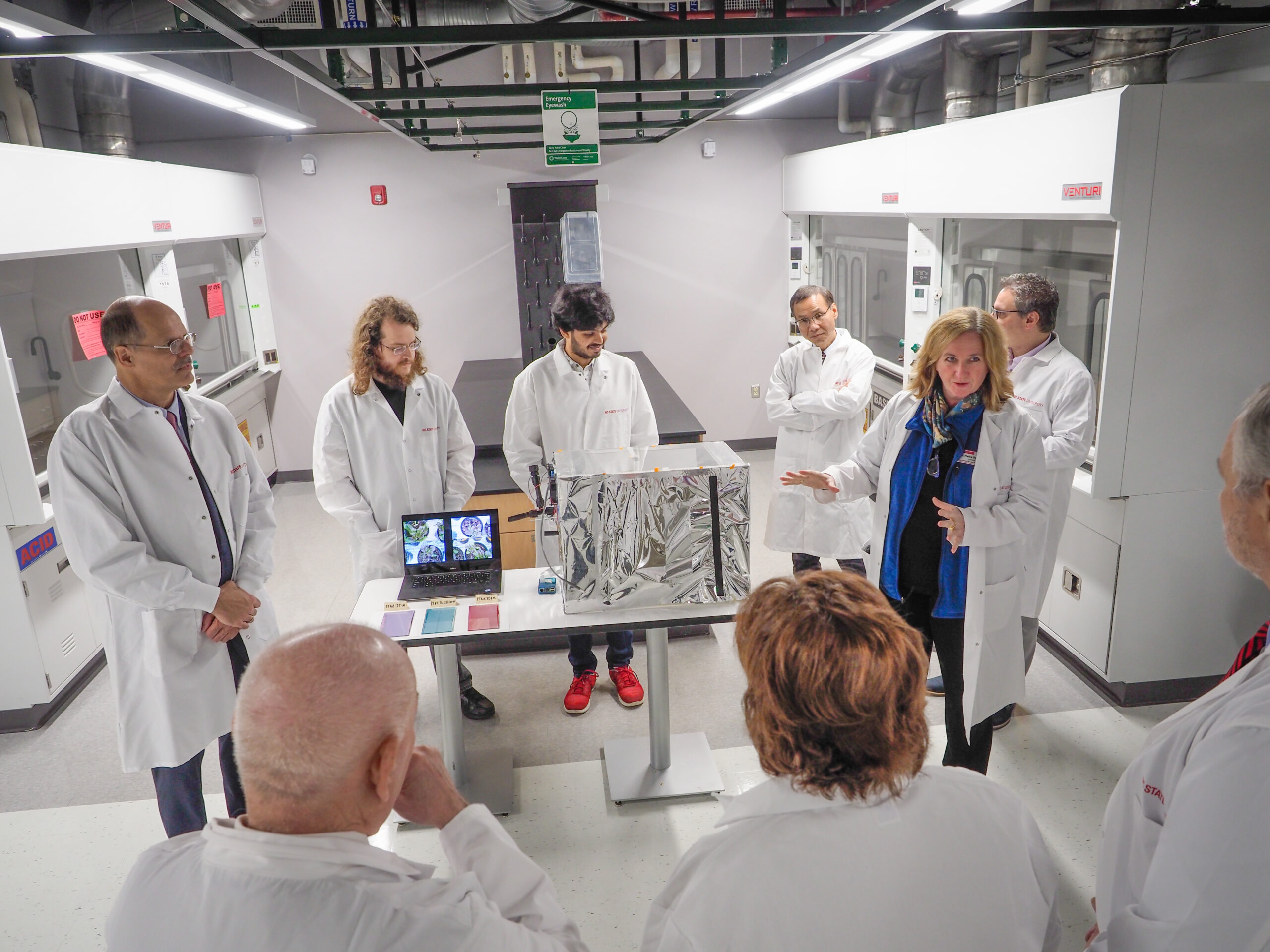Dali Sun group reports on a spintronic THz emission from an n-doped wide bandgap semiconductor
The development of terahertz (THz) spintronics has created a paradigm shift in the generation of THz radiation through the combination of ultrafast magnetism and spin-based electronics. However,  research in this area has primarily focused on all-metallic devices comprising a ferromagnetic thin film adjacent to a non-magnetic heavy metal. The group of Dali Sun at NCSU has experimentally observed spintronic THz emission from an n-doped wide bandgap semiconductor, n-GaN. According to this report that was published in Applied Physics Letters (Editor’s pick), the amplitude of the THz emission strongly depends on the carrier concentration of the semiconductor layer, which could be attributed to the tunable Rashba state occurring at the n-GaN/ferromagnet interface. This finding offers exciting prospects for pursuing wide bandgap semiconductor-based spintronic THz devices and demonstrating their intriguing spin Hall physics at the ultrafast timescale.
research in this area has primarily focused on all-metallic devices comprising a ferromagnetic thin film adjacent to a non-magnetic heavy metal. The group of Dali Sun at NCSU has experimentally observed spintronic THz emission from an n-doped wide bandgap semiconductor, n-GaN. According to this report that was published in Applied Physics Letters (Editor’s pick), the amplitude of the THz emission strongly depends on the carrier concentration of the semiconductor layer, which could be attributed to the tunable Rashba state occurring at the n-GaN/ferromagnet interface. This finding offers exciting prospects for pursuing wide bandgap semiconductor-based spintronic THz devices and demonstrating their intriguing spin Hall physics at the ultrafast timescale.


